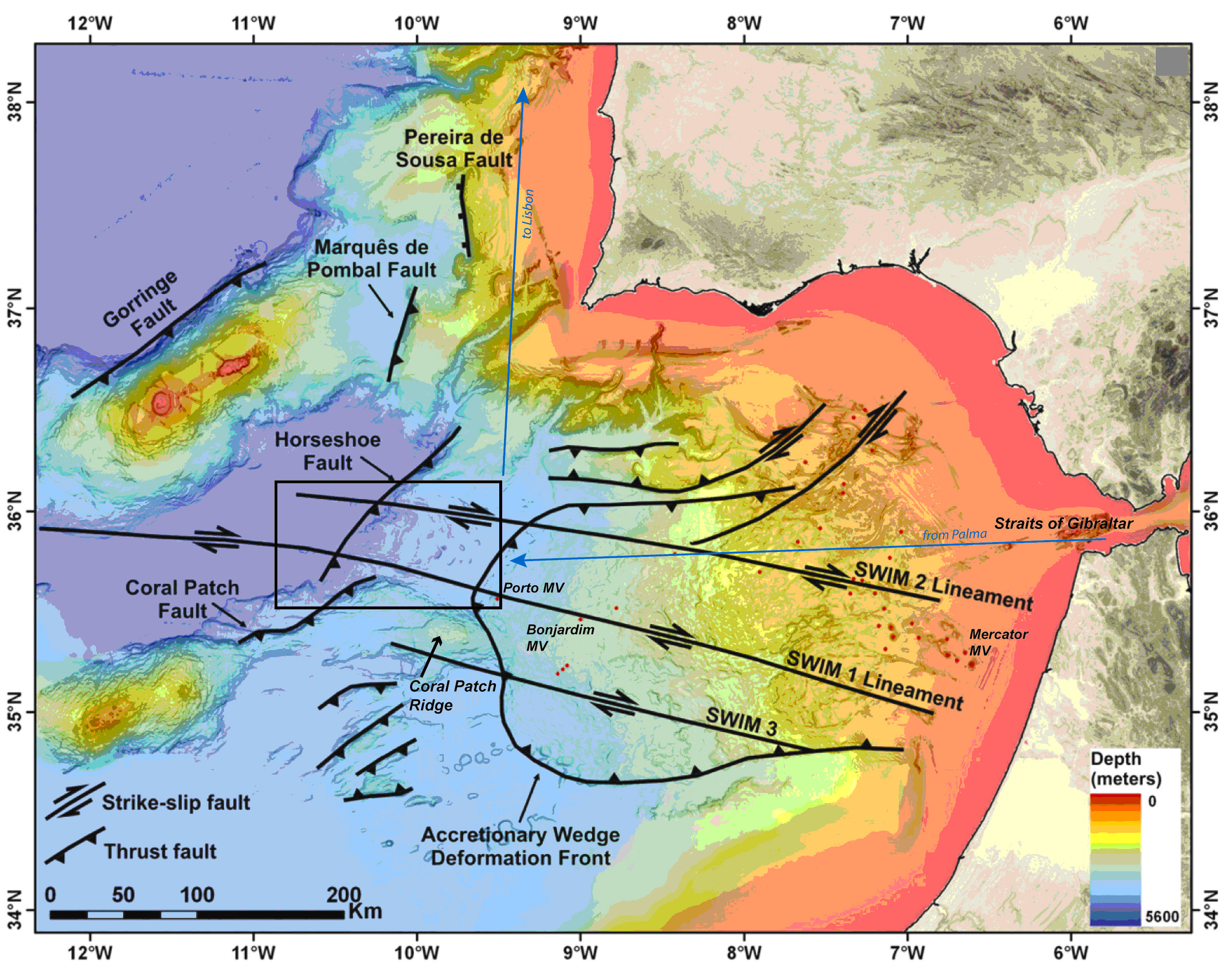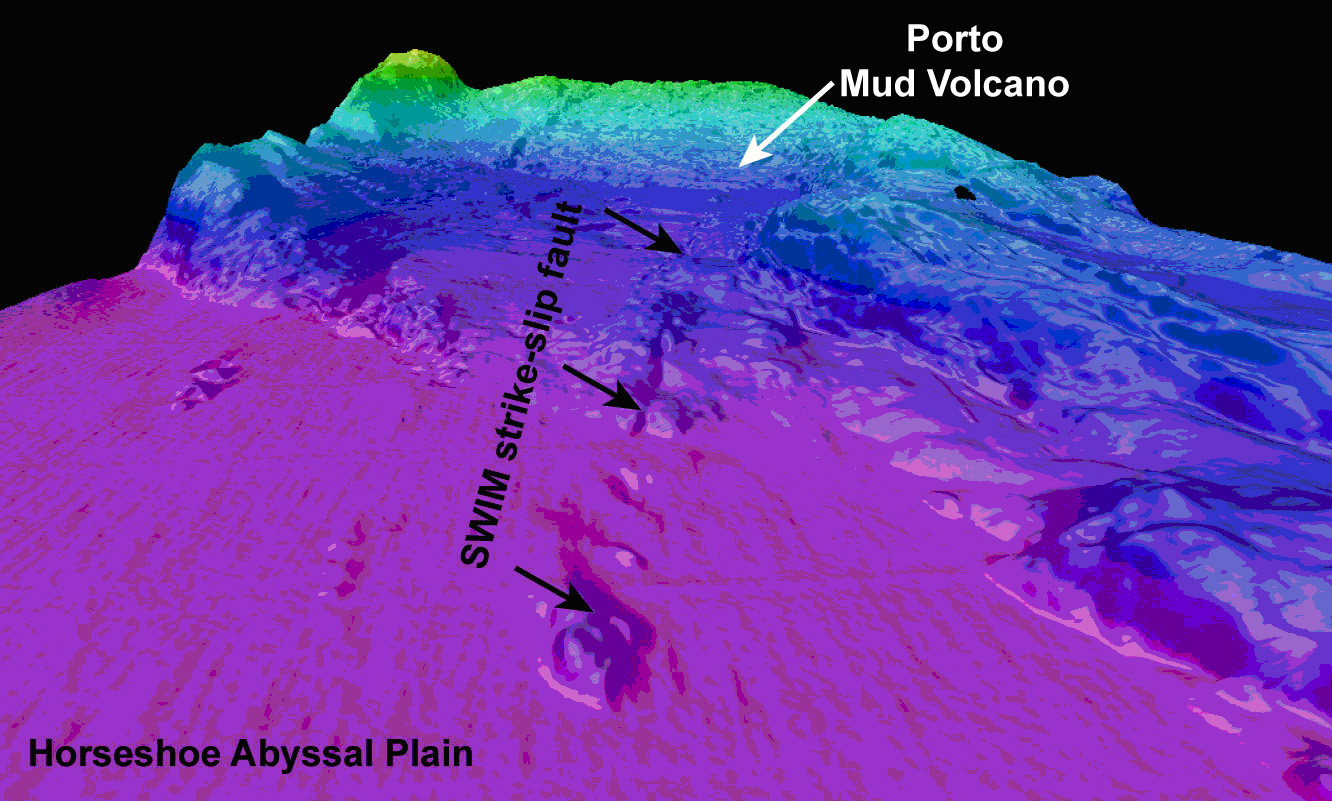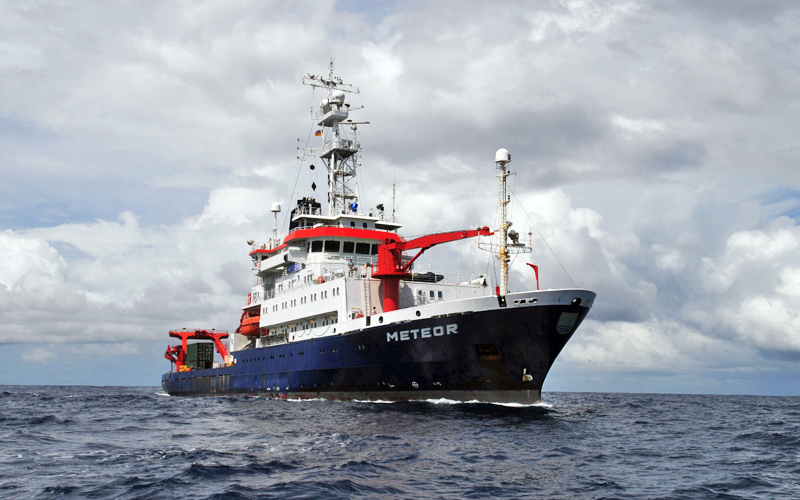METEOR M86/5
- Area:
- Western Gulf of Cadiz
- Time:
-
23.02.2012 - 16.03.2012
- Institution:
- GEOMAR
- Chief scientist:
- Christian Hensen
Expedition M86/5 aims at collecting data from potential fluid dewatering sites located in the deep-sea region in the western extension of the Gulf of Cadiz. Previous work on mud volcanoes on the accretionary prism in the Gulf of Cadiz (SO 175, MSM1/3), which are aligned along west-east trending transform faults, showed that mud volcano fluids are sourced in several km depth below the seafloor. The geochemical composition of the mud volcano fluids indicates that they are affected by oceanic crust alteration, and hence implies that there is active flow connecting the oceanic basement and the seafloor. To date, such kind of hydrothermal circulation is only known for relatively young oceanic crust (<60 Ma). Hence, the existence of a hydrological connection between old, sedimented oceanic crust and the seafloor is a phenomenon, which essentially has not been investigated in the past, and may represent a (missing) link between hot vents at mid-ocean ridges and cold seeps at continental margins. We plan to investigate selected sites along the westward trending transform faults, mainly within the transition between the accretionary prism and the abyssal plain. As the sediment cover generally decreases to the west, the potential overprinting of the hydrothermal signal of seep fluids by sediment alteration processes is expected to be reduced likewise. In general, we will follow an interdisciplinary approach characterized by extensive geochemical sampling in the water column and the sediment, heat flow measurements, and detailed mapping with AUV. A large-scale bathymetric data set is available through Portuguese partners, which allows a specific pre-selection of potential seep locations. The cruise will be conducted in collaboration with scientists from the Laboratório Nacional de Energia e Geologia (Lisbon, Portugal), the University of Aveiro (Portugal), the Centre Mediterrani d'Investigacions Marines i Ambientals (Barcelona, Spain) and the University of Bremen.
Bathymetric map of the Gulf of Cadiz including major tectonic features. The box depicts the proposed working area west of Porto mud volcano.
Perspective view (W-E) focusing on the SWIM 1 strike-slip fault. There are numerous indications for fluid discharge sites at the seafloor along the fault.



